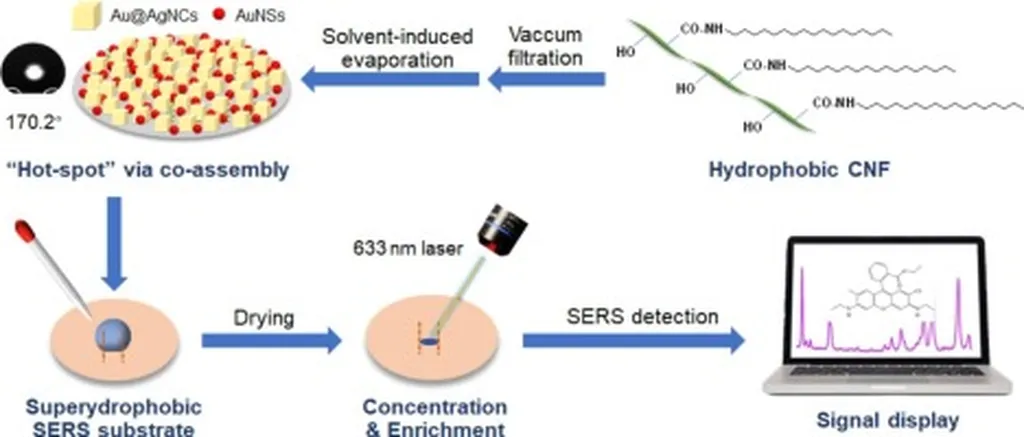In the heart of Jiangsu University, researcher Mei Wang and her team are tackling a pressing issue in modern agriculture: pesticide residue detection. Their work, recently published in *Nanomaterials* (translated as *纳米材料*), is shedding light on innovative technologies that could revolutionize food safety and ecological balance.
Pesticides are a double-edged sword in agriculture. While they protect crops from pests and diseases, their residues can pose significant threats to human health and ecosystems. Traditional detection methods, such as chromatography and mass spectrometry, have been the gold standard in laboratories. However, they often fall short in field applications due to their complexity and cost.
Wang’s review paper explores a range of technologies, from spectroscopic methods that enable non-destructive, multi-component analysis to biosensors that offer portable, real-time field detection. “The key is to find a balance between sensitivity, specificity, and practicality,” Wang explains. “We’re seeing exciting advancements in nanotechnology and AI that could tip the scales in our favor.”
One of the most promising areas is the use of nanomaterials to enhance sensor sensitivity. These nano-enhanced sensors could detect pesticide residues at levels as low as femtograms, making them incredibly sensitive. Additionally, AI-driven data analysis is improving the efficiency and accuracy of these detection methods.
But the journey isn’t without its challenges. As Wang points out, “While we’ve made significant strides, issues like cost, operational complexity, and sensitivity still persist.” To address these gaps, future research should focus on biomimetic materials for specificity, microfluidic “sample-to-result” systems, and cost-effective smart manufacturing.
The implications of this research extend beyond agriculture. In the energy sector, similar sensing technologies could be adapted for environmental monitoring, ensuring that energy production processes are not leaving harmful residues. Moreover, the integration of AI and nanotechnology in sensing systems could lead to smarter, more efficient energy management.
Wang’s work is not just about detecting pesticide residues; it’s about shaping a future where technology and sustainability go hand in hand. As she puts it, “Our goal is to strengthen food safety from farm to table while protecting our ecological balance.” With continued research and innovation, this vision could soon become a reality.
In the meantime, Wang’s review paper serves as a valuable resource for researchers, supporting regulatory optimization and evaluating sustainable pest control strategies. As the field of agritech continues to evolve, one thing is clear: the future of food safety is looking increasingly high-tech.

